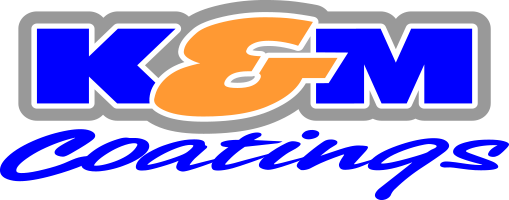Garage Floor Installation Process
For all of our applications (residential, commercial, outdoor) the installation process always starts with a full evaluation of your existing concrete surface. We investigate structural condition, harness and moisture content. Then we use this analysis to determine how we approach the most important step — concrete preparation.
GARAGE FLOOR PREPARATION
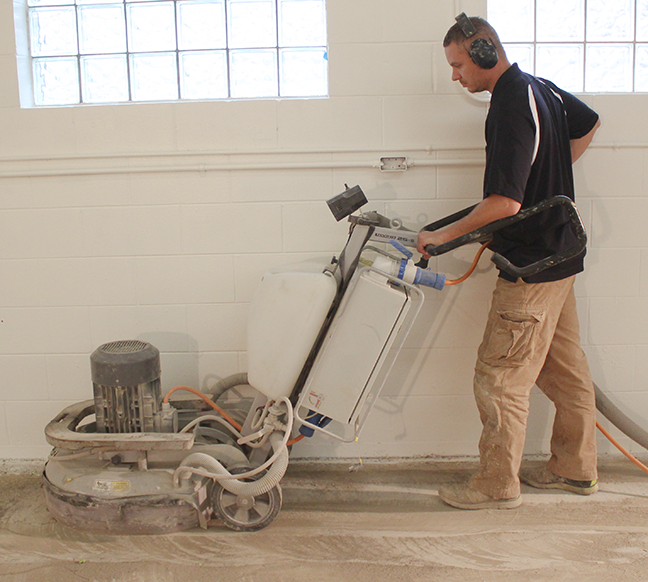 Our first step and main form of preparation is shot blasting, which extends the life of your floor by giving you the greatest adhesion possible. We use Blastrac Walk-Behind Shot Blasting Systems which use a high performance, airless, centrifugal wheel for propelling blast media at a high velocity, in a controlled pattern and direction.
Our first step and main form of preparation is shot blasting, which extends the life of your floor by giving you the greatest adhesion possible. We use Blastrac Walk-Behind Shot Blasting Systems which use a high performance, airless, centrifugal wheel for propelling blast media at a high velocity, in a controlled pattern and direction.
Metal abrasives, thrown by the rapidly rotating blast wheel, are accelerated toward the surface being prepared. The media strikes the surface and rebounds, along with the removed contaminants, into a recovery chamber or separator. The dust collector removes pulverized abrasives, dust, and contaminants. Very little abrasive is lost and the usable media is returned to the storage hopper for recirculation by the blast wheel.
Different surface profiles can be achieved by varying the shot size, shot flow rate, and machine travel speed. Shot blasting produces the most course profile while removing any deteriorated or weak concrete, leaving the surface immediately ready for coating. This is the number one form of preparation used in the coatings industry today.
In applications where a shot blaster is not preferred we use a diamond grinding process. Typically this process is used when you have soft deteriorated concrete or a thick preexisting coating. The use of course grit diamonds or polycrystalin diamonds help us achieve the required profile. Our diamond grinders consist of eight rotating heads. By varying the grits and bonds used, diamond grinders can be affective on differing concrete types. Diamond grinders are especially helpful when cracks or joints are at different profiles and need to be leveled.
CONCRETE RESTORATION
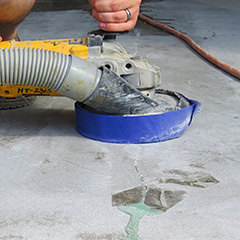 CRACKS
CRACKS
- First, we use a diamond grinder with a V-blade to open up and abrade both sides of the crack. By doing this, we gain additional surface area for better product adhesion.
- Next, we mix our mender material and overfill the crack.
- When the material is fully cured (typically only seven to ten minutes!) we grind the overfilled material flush with the concrete surface. This leaves the floor smooth and level.
PITS
-
All floor pits are then prepped using the shot blaster to clean and remove weak concrete. This gives the damaged area a course profile for our repair material to bond to. Next, just like repairing a crack, we mix our mender material and overfill the pit.
-
When the material is fully cured (typically seven to ten minutes!) we grind the overfilled material flush with the concrete surface. This leaves the floor smooth, level and ready for coating.
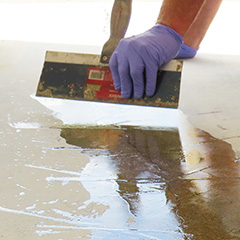 SPALLING
SPALLING
-
We prepare all spalled areas just like we repair pits. We use the shot blaster to remove all the deteriorated concrete. The remaining concrete is strong and ready for our repair material to bond to it.
-
Next, depending on the severity of the spalling, we mix up a small to large batch of mender material and use a trowel/squeegee to pull the material into the spalled areas. Again, we over fill these areas to be able to grind them back down. This step may be repeated on floors with severe spalling.
-
When our material is fully cured (typically seven to ten minutes) we grind the overfilled material flush with the concrete surface.
We check to make sure that all the areas are level with the floor and refill any uneven areas. We believe that it is best to leave all control joints open to allow for the movement of the concrete and relieve the stress. If requested, control joints can certainly be filled for aesthetic value.
The repair process is followed by vacuuming the floor and using a leaf blower to flush out any remaining debris. The surface is now ready for coating.
GARAGE FLOOR COATING PROCESS
Typically in garage floor applications we will apply a polyurea full chip coating system. Prior to coating the floor we will start with coating all vertical surfaces:
- “Curbing” is the vertical surface typically found around the perimeter of the concrete slab.
- Stairs (Concrete or Wood)
- Walls
We start by mixing up a small amount of our base coat, a 100% solids self-priming pure polyurea, which we brush on to all vertical surfaces. Next, we throw handfuls of chips and use a scraper to pull them vertically against the wall, leaving the surface fully covered. We then vacuum and recover any loose chip left behind on the floor.
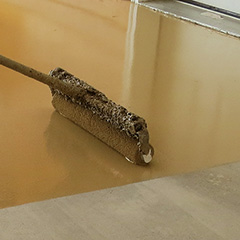 COATING THE FLOOR - BASE COAT
COATING THE FLOOR - BASE COAT
We start by mixing a small amount of our base coat, a 100% solids self-priming pure polyurea, which is used to cut in all the edges around the floor.
When the floor edges are cut in, we mix one gallon of base coat at a time and spread it out at a rate of approximately 175 sq. ft. per gallon. This is achieved by pouring the mixed coating onto the floor in a line and using a roller/squeegee to spread the material evenly to the desired thickness. We repeat the mixing and rolling process until the whole surface is covered completely.
BROADCASTING THE COLOR CHIPS
When the floor is coated completely, we mix our chips (sometimes called flakes) in a large container to insure an even blend of colors. We then broadcast the chips into the wet coating by hand, covering the whole floor with the chips. By using large quantities of chips, we ensure that the floor is completely covered, leaving it uniform in color and texture.
The cure time of our basecoat is typically 45-60 minutes, depending on outside temperatures.
SCRAPING OF THE CHIP
Once our basecoat is fully cured we “scrape” down the chip. With metal blade scrapers, we walk along the floor putting pressure on the blade to cut and scrape any loose or vertically standing flakes. In most applications, we scrape the floor from front to back and also side-to-side to ensure we have hit all angles of the chip. This results in the floor having a nice even texture. At this time, we also scrape vertical surfaces (such as walls and steps) by hand to knock down any loose flake. We then vacuum to recover any loose chip left behind on the floor.
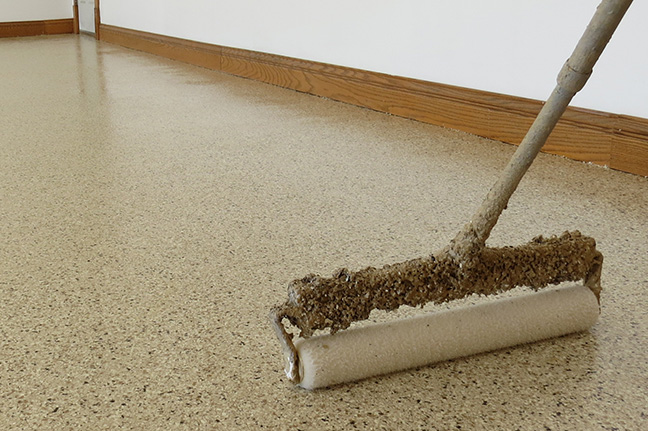 CLEAR COAT APPLICATION
CLEAR COAT APPLICATION
After our floor is prepped, coated, flaked, scraped, and vacuumed, we can start our final step — the application of the clear coat. Typically, we use a 93% solids Polyaspartic Polyurea UV stable clear coat that is applied at a rate of 145-160 sq. ft. per gallon. We start by clear coating all of the vertical surfaces and brushing the perimeter of the floor itself. With the clear coat, instead of mixing one gallon of product at a time, we mix the entire batch of product needed to cover the whole floor. This allows for maximum consistency. We pour the mixed product directly on to the floor and use a soft squeegee to spread the coating to the desired thickness. Then we use an 18 inch roller to back-roll and cross-roll the entire surface. This smoothes any lines left behind by the squeegee and leaves a nice even clear coat over the entire floor.
YOUR NEW FLOOR COATING
At this point we clean up and leave the floor to dry. After four to six hours, you can confidently walk on your new coating and after 24 hours, you can park and drive on it. We're confident you will be pleased with your new floor!

